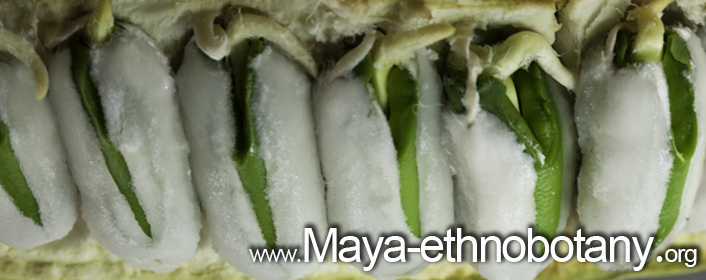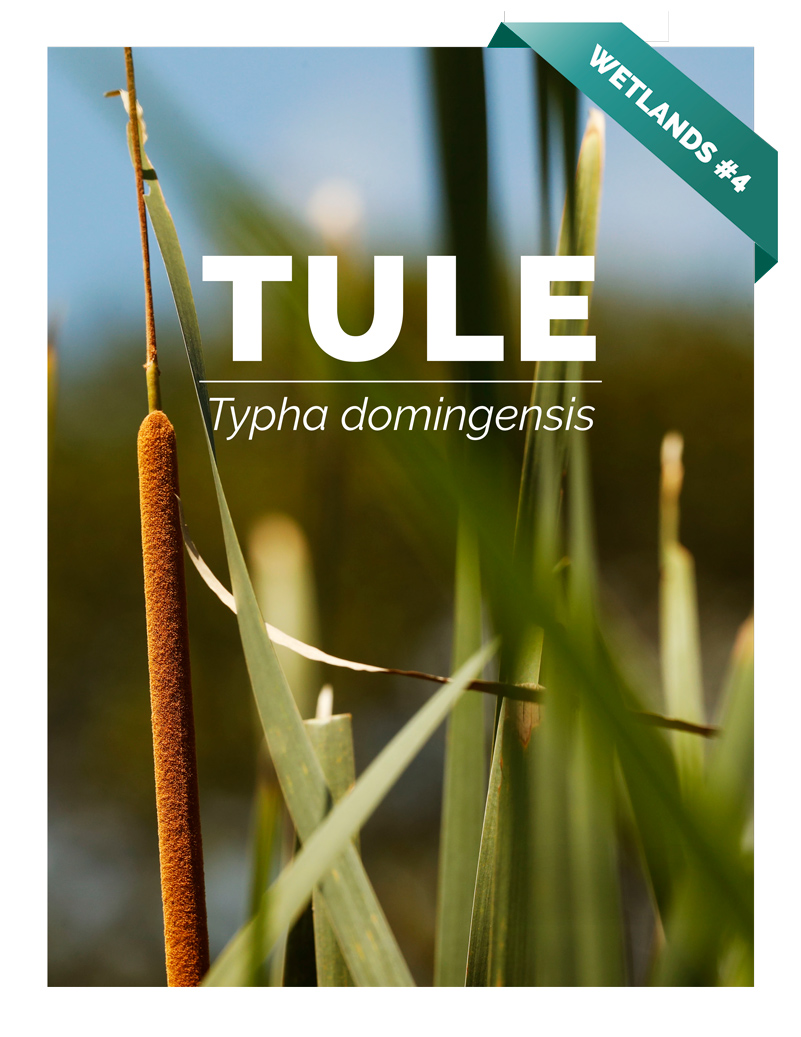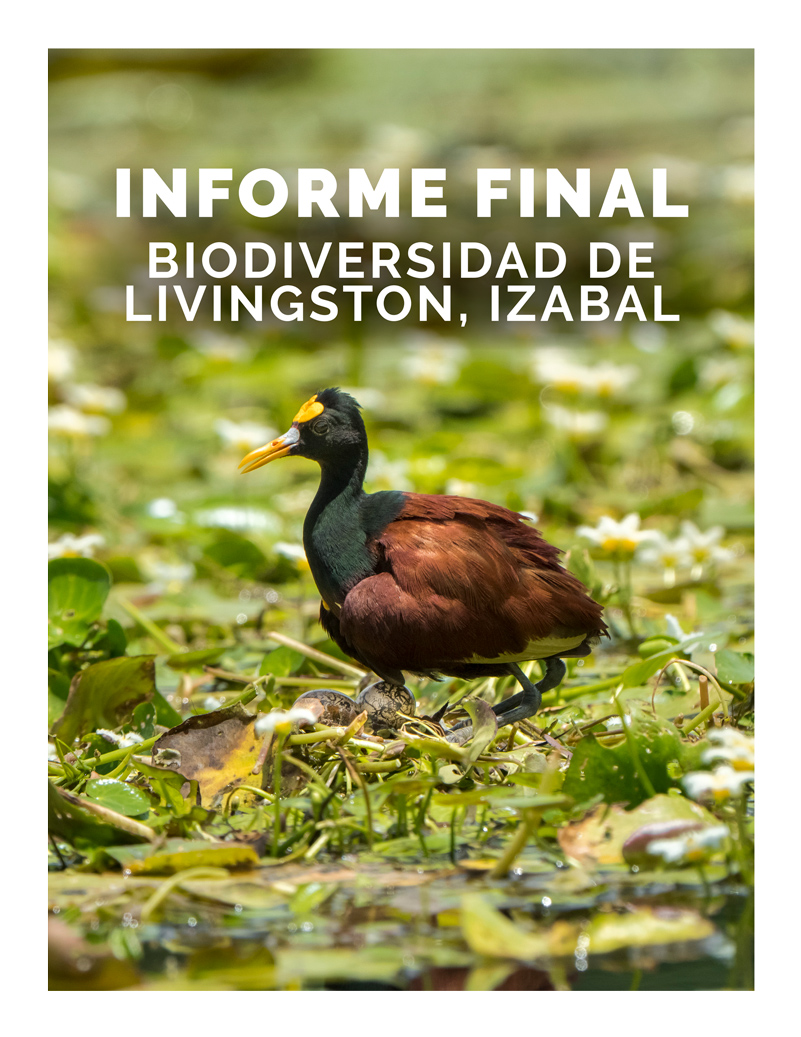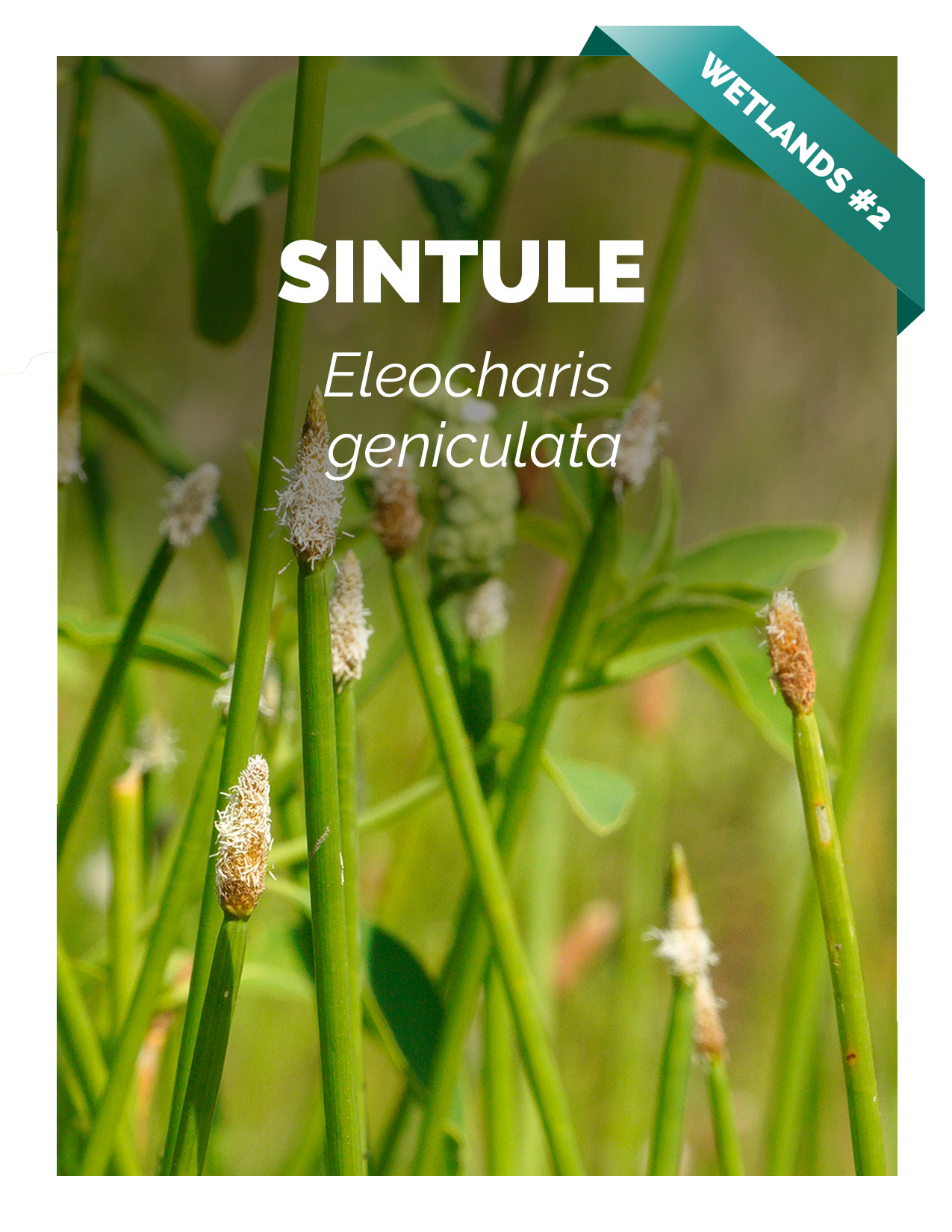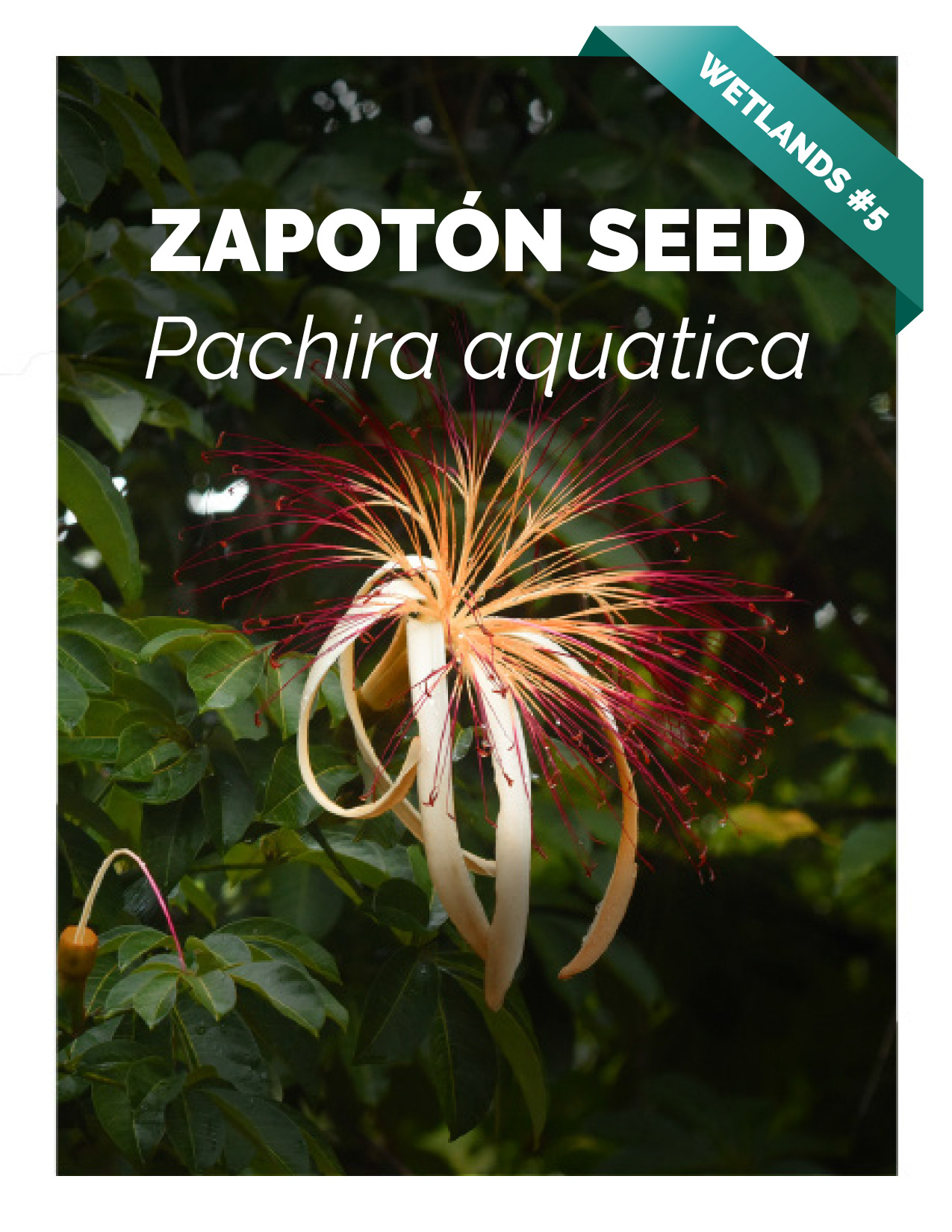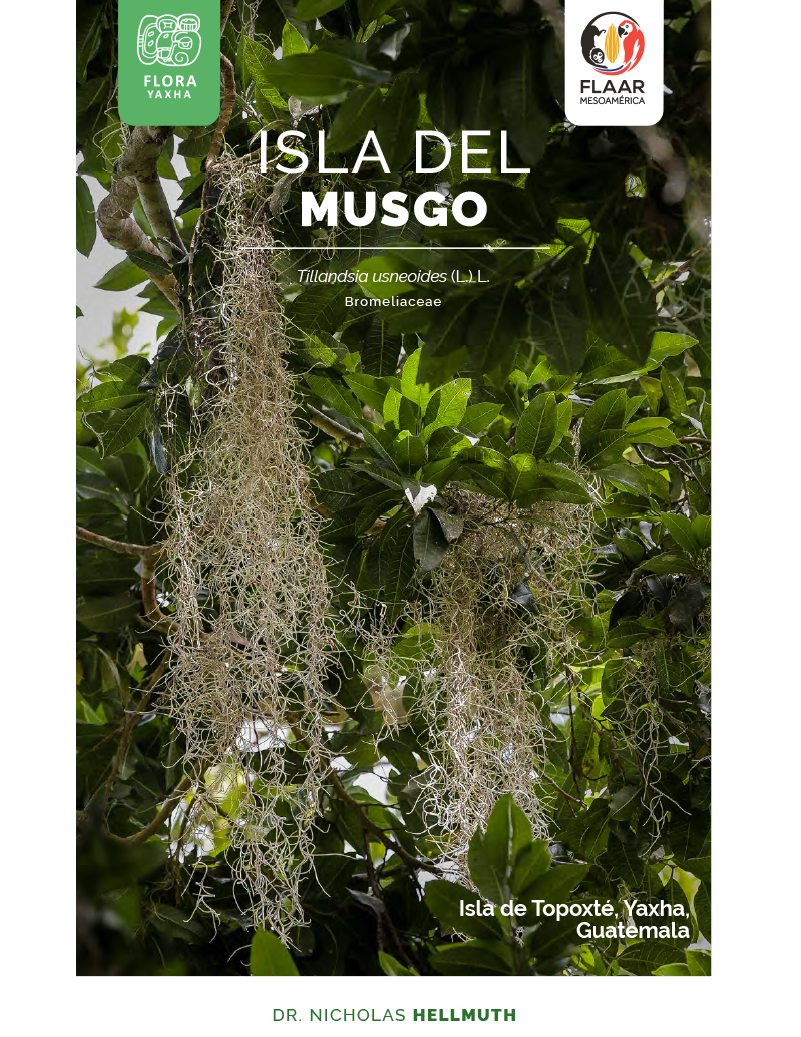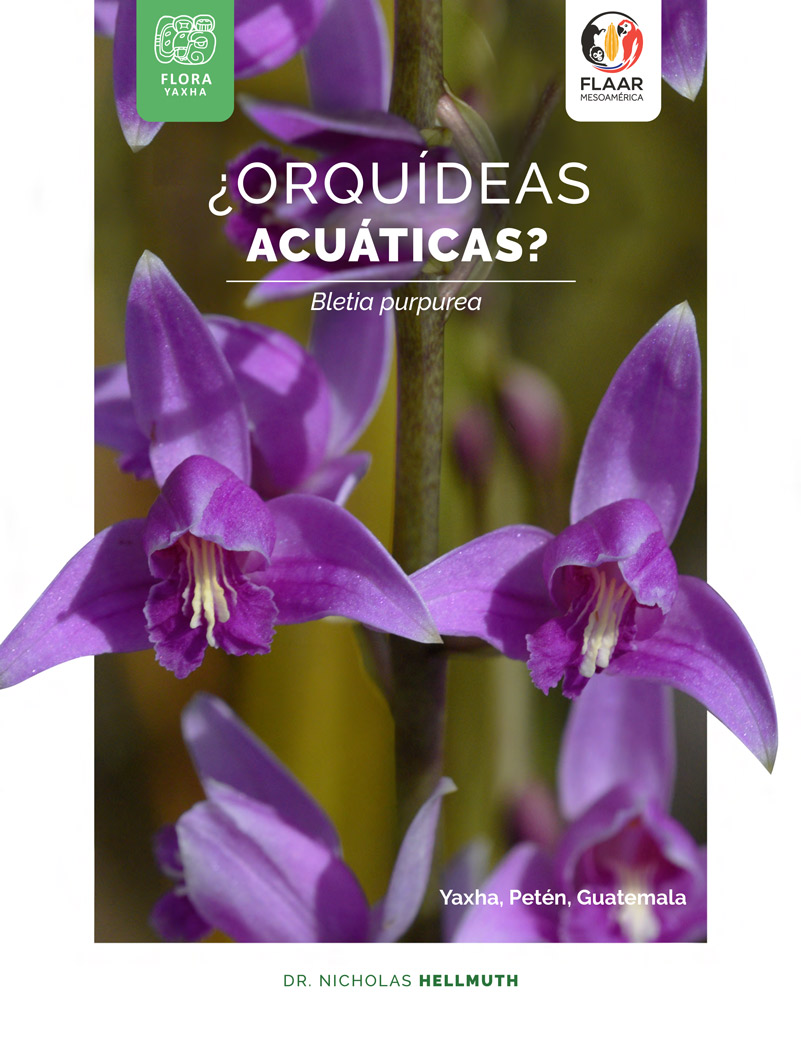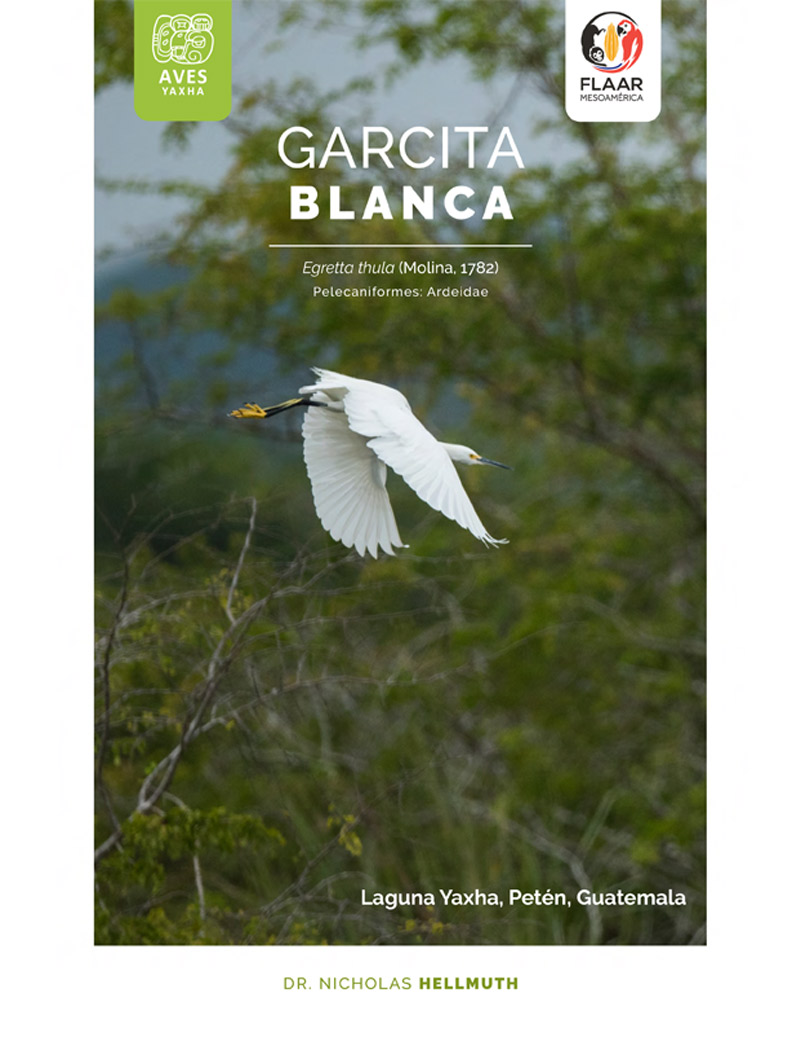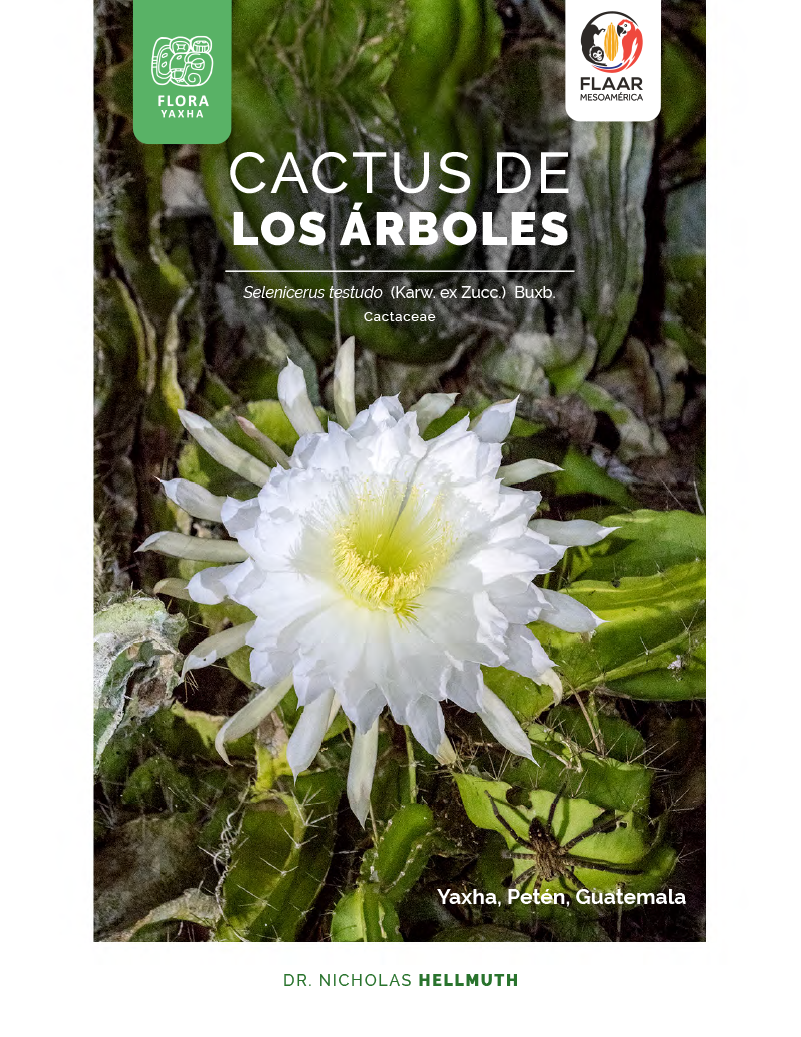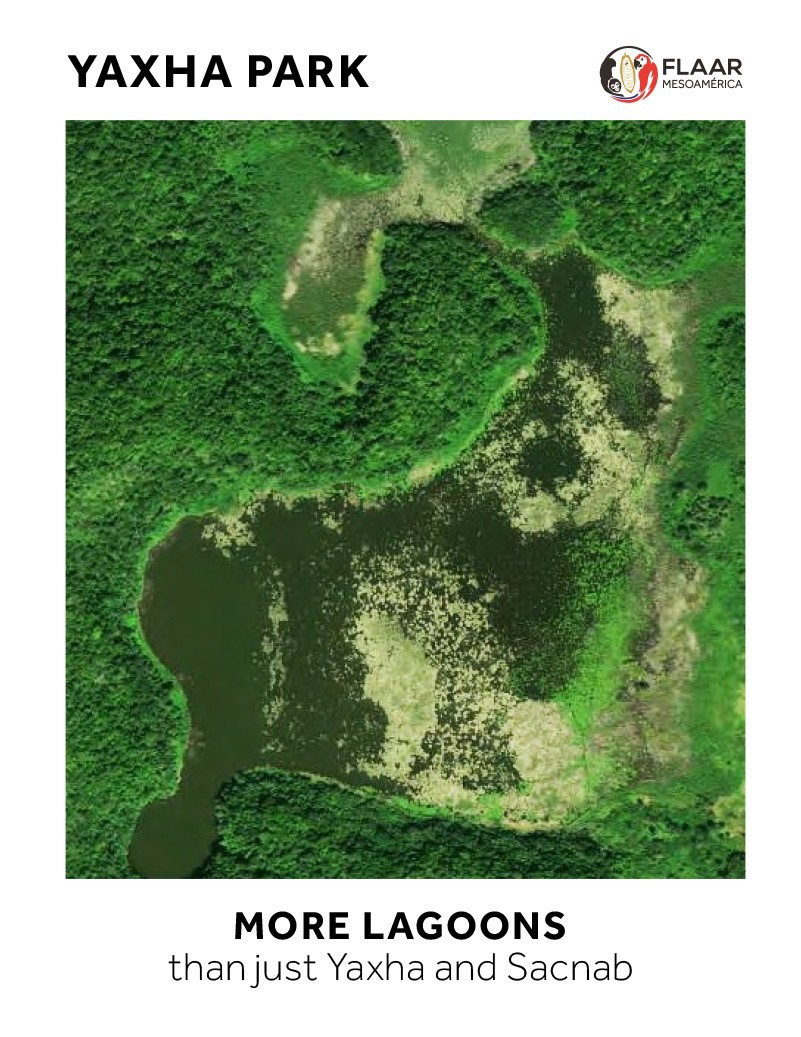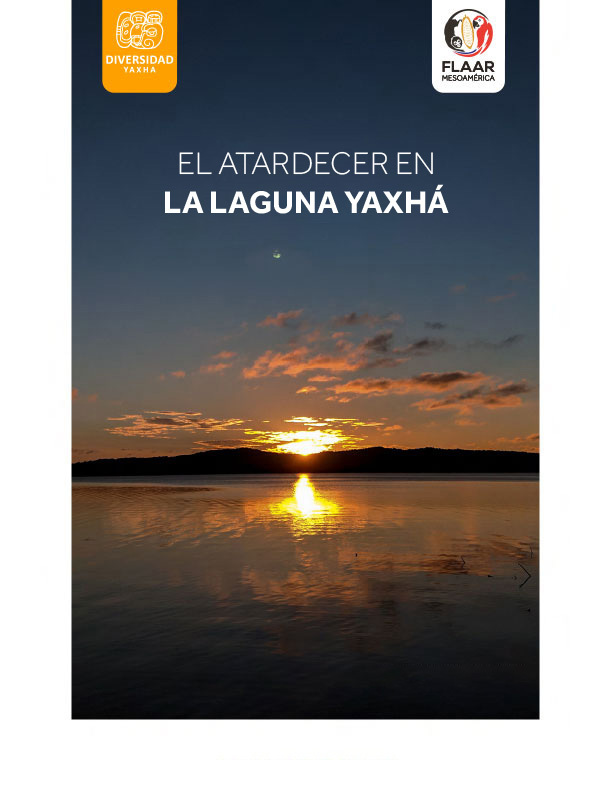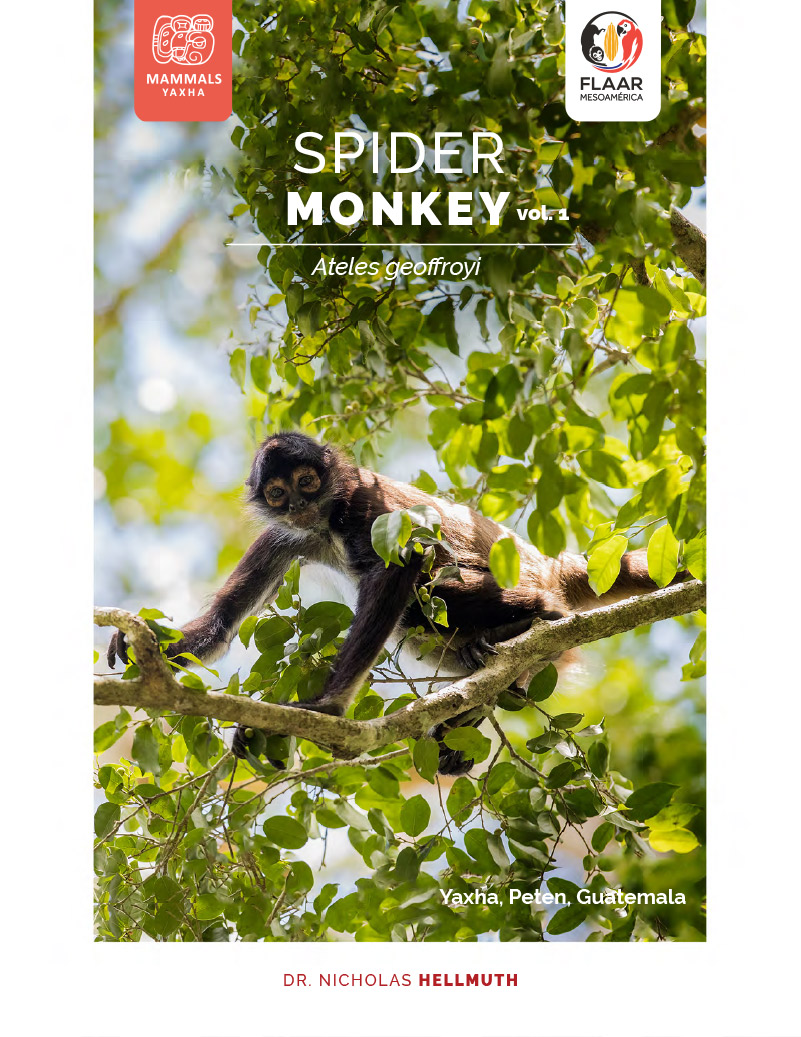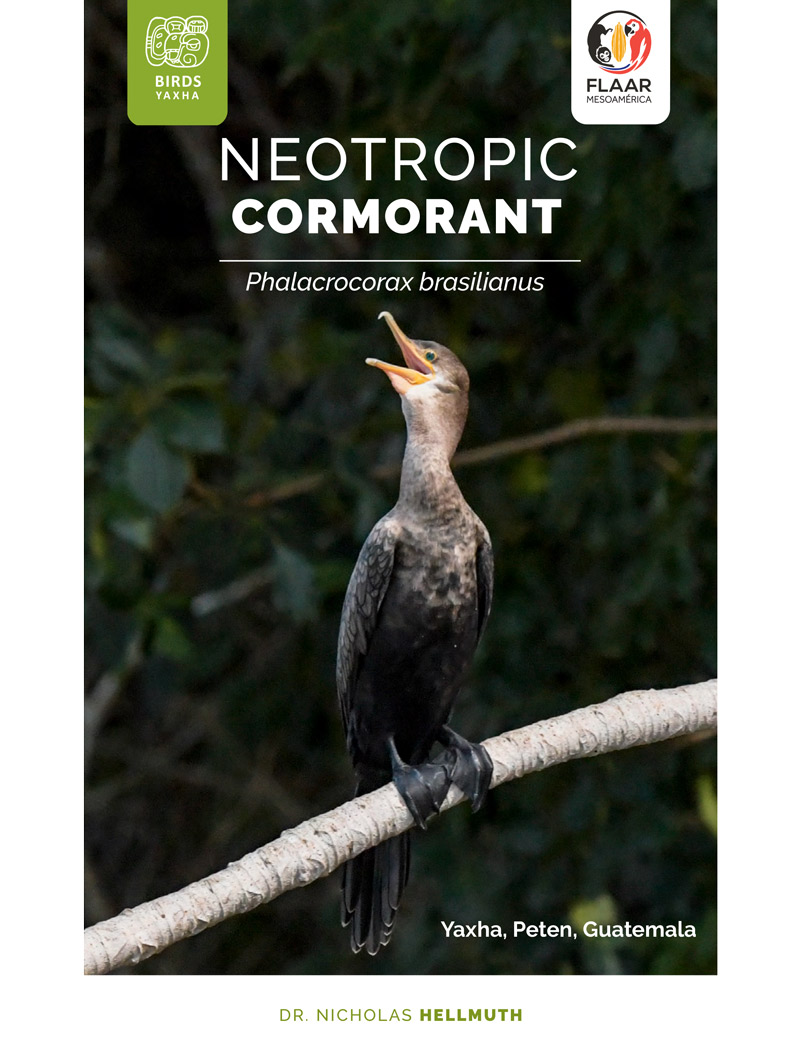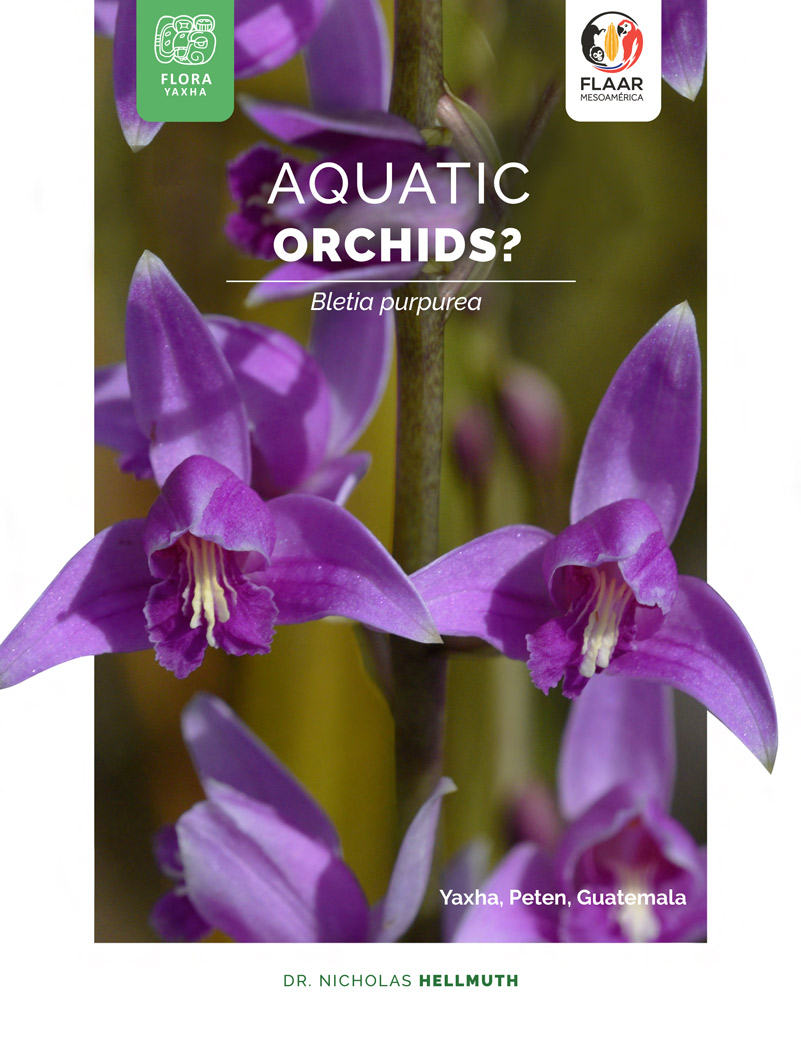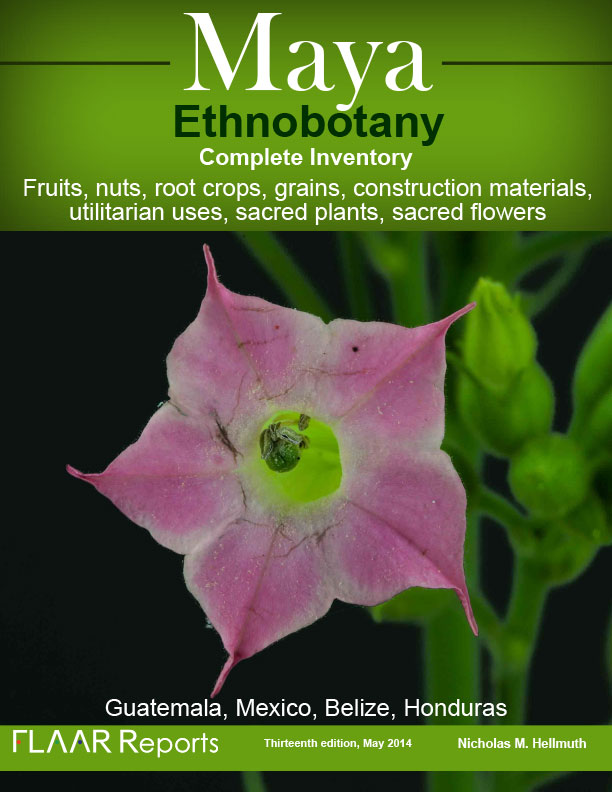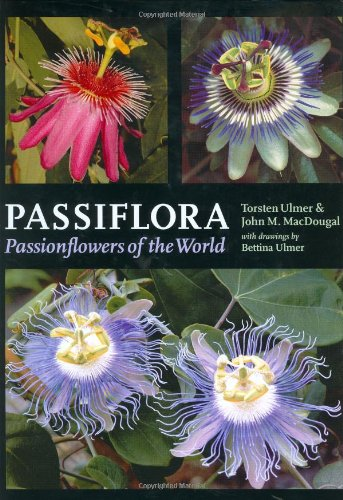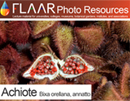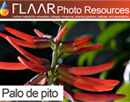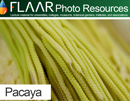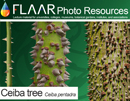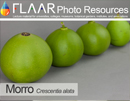When time and funding permit, each flower (each plant species) will have its own page, and its own PDF, and eventually its own PPT so that professors and students have plenty of material on Guatemala (and Honduras, etc) to study.
Heliconia adflexa, Coban, Guatemala, Hotel Monja Blanca, FLAAR, by Nicholas Hellmuth
This space is for flowers
we have recently found and photographed.
|
| Share
|
| Passiflora, passionflower vines, Parque Nacional Yaxha Nakum Naranjo, Peten, Guatemala |
Lots of Passifora vines, passionflowers, and fruits around Yaxha and NakumWhile hiking up the hill from the shore of Lake Yaxha towards the acropolis of the Post Classic Maya site of Topoxte (Island), our guide (Teco) noticed fruits of a Passiflora vine on the ground. The vine was so high in the tree I had to use binoculars to find it. This is why you need an 800mm prime telephoto lens if you are doing botanical field work. Or at least a 600mm lens. Botanist Dr John MacDougal kindly identified the fruit (keeping in mind you need a flower to be sure; there were no flowers the day we saw the fruit). We thank the local guide, Teco (Moises Daniel Perez Diaz) for noticing the fruits.
We would like to find every Passiflora vine, flower, and fruit in PNYNNWe tend to notice passionflower vines along the seasonally inundated edges of rivers, lakes, lagoons, and aguadas. We have found a lot of Passiflora vines along Arroyo Pextexbatun (upstream from Sayaxche, Peten). But the area where we have found the most diversity of species is in the Yaxha Nakum Naranjo national park. We also find passionflower vines in seasonally inundated savannas in the park. But the edible fruit species was uphill from the edge of the lake, so was a forest species. These are almost impossible to see unless you have binoculars and enough time to literally scan every single tree around you. The Passiflora species along the edge of a river or lake are easy to spot since they are in front of you, at eye level, and there are lots of flowers to attract your attention. The difficulty of finding a species that prefers high tree canopies may be why the edible species has not previously been documented for the Yaxha park area.
We have also found passionflower vines growing alongside highways in the Maya Highlands. And in gardens of people’s homes. Just realize that not all are native to Guatemala. So at the Yaxha Nakum Naranjo park we focus on passionflowers that are native to Guatemala. Same species are probably found in neighboring areas as well. Suggested reading on Passiflora flowers
Dr MacDougal is a professor at Harris-Stowe State University (in St Louis) and a botanical researcher at the Missouri Botanical Garden (also in St Louis). Since he is in the same city as I live, we occasional meet since he lives not far from my architect brother Daniel Hellmuth. Torsten Ulmer is a botanist at Universität Essen. Helpful notes by Professor MacDougal on Passiflora of Yaxha park areasSince we know the botanical work of Dr MacDougal on passionflowers, whenever we find one, we send him the photos and he kindly responds with helpful information. Thank you very much for sending the photos. The pink-flowered one is the southernmost record for Passiflora sublanceolata, good find! Supposedly that is hummingbird pollinated. I have never seen it alive, but it sure is pretty. The other photos from Isla Topoxté are of Passiflora mayarum (Passiflora of the Maya), and these are the first known photos of the fruit! Which is quite important and helpful to understanding this poorly known species. It is related to the maracuja (P. edulis) of commerce, and I think could be helpful in genetic breeding to improve P. edulis. Thanks for letting us know what the fruit looks like! Any discussion of the passionflowers of Petén should include the reference “Killip, E. P. 1936. Passifloraceae of Mayan Region. In: Botany of the Maya Area: Miscellaneous Papers. XIII. Publ. Carnegie Inst. Wash. 461 (13): 299–328.” It includes Lundell’s 1937 observations but expands the area covered. Links to our other web pages on Passiflora flowers and fruits Various species of passionflowers and fruits of Guatemala Passiflora quadrangularis flowers and fruits Bibiography on Passiflora of Mesoamerica and uses in the Maya culture
Bibliography Part II: http://ecobiosis.museocostarica.go.cr/recursos/botanica/guiasdecampo/passifloras%20de%20costa%20rica/ http://biological-diversity.info/native_passiflora_2.htm http://elvibrero.blogspot.com/2010/11/propiedades-medicinales-de-la-maracuya.html
First posted September, 2020 |
Parque Nacional Yaxha, Nakum and Naranjo
Carnivorous Plants
Plants of Municipio de Livingston, Izabal
- Acrostichum danaeifolium, giant leather ferns
- Bellucia Pentamera
- Bibliography on Grias cauliflora
- Bibliography on Licania platypus
- Bibliography on Mangle negro (Avicennia germinans) L.
- Bibliography on Montriacardia arborescens
- Bibliography on Typha domingensis and Thypha latifolia
- Conocarpus erectus, white mangrove
- Edible Wetlands Plants, Hotel Tortugal
- Heliconia latispatha
- Heliconia wagneriana
- Manicaria saccifera Confra palm
- Neotropical trees of Guatemala need protection
- Nymphoides indica, waterlily flowers
- Pachira aquatica, zapoton
- Bibliography on Pithecellobium Mart., Neotropical trees of Mesoamerica
Ecosystems, Wetlands Aquatic Plants
Smartphone Camera Reviews
Bushes and small trees
Fungi and Lichens
Orchids
- Bibliography Bletia purpurea, aquatic orchid
- Bibliography, Epidendrum radicans
- Bibliography on Habenaria Orchids from Yaxha
- Bibliography, Lycaste virginalis var. alba.
- Bibliography, Macroclinium bicolor
- Bibliography, Prosthechea cochleata
- Bibliography Sobralia macrantha, Lirio de San Juan
- Bibliography, Sobralia xantholeuca
- Bibliography on Terrestrial shade orchids from Guatemala
- Bibliography on Terrestrial sunny orchids from Guatemala
Botanical Terms
Maya and Aztec flavorings for cacao, cocoa, chocolate
- Achiote, Bixa orellana
- Bibliography on Achiote, Bixa orellana
- Bibliography on Esquisúchil, Bourreria huanita
- Bourreria huanita
- Cassia grandis, bucut
- Chile Chocolate
- Chile Chocolate (Capsicum annuum var accuminatum)
- Chiranthodendron pentadactylon
- Cymbopetalum penduliflorum
- Guazuma ulmifolia
- Haematoxylum brasiletto
- Piper auritum, hoja santa
- Piper species
- Quararibea funebris
- Sterculia apetala, castaño
- Tagetes sp., Marigold
- Talauma, a variant of Magnolia
- Vanilla orchid
- Virola and nutmeg
Cacao, cocoa, chocolate
Consulting cacao & Theobroma species
Tobacco Ingredients of Aztec & Maya
Trees of Mesoamerica
- Bibliography on Acacia dolichostachya, Wild tamarind
- Bibliography, Bellucia costaricensis
- Bibliography, Bucida buceras
- Bibliography on Coccoloba belizensis Standl.
- Bibliography on Cojoba sp. and Cojoba arborea
- Bibliography, Ficus.
- Bibliography on Haematoxylum campechianum and H. brasiletto
- Bibliography on Hibiscus pernambucensis
- Bibliography on Ipomea murucoides
- Bibliography on Lacmellea standleyi, lechemiel
- Bibliography on Leucaena leucocephala
- Bibliography on mangle rojo (Rhizophora mangle)
- Bibliography on Manzanillo, Alseis yucatanensis Standl.
- Bibliography on Matilisguate, Tabebuia rosea
- Mangrove swamp Trees
- Bibliography on Ruagea insignis
- Bibliography on Pterocarpus officinalis
Bombacaceae, Bombacoideae
Tropical Fruits of the Maya
- Avocado Hass
- Bibliography on Coloc, Talisia floresii
- Bibliography, Dichogamy of avocado species
- Bibliography on Guayo, Talisia olivaeformis
- Bibliography on Laetia thamnia, Bakelac
- Bibliography on Maracuyá, Passiflora quadrangularis L.
- Bibliography on Punica granatum L., Granada
- Cashew
- Cuajilote, Parmentiera aculeata
- Granada
- Guanabas and Annonas
- Guava, Guayaba, Psidium guajava L
- Introduction to Papaya
- Nance a fruit of prehispanic Guatemala
- Passion flowers and fruits
- Passion flower, giant fruit
- Talisia floresii, Sapindaceae
- Carica Papaya Bibliography
Tropical Nuts
Spices, condiments, food coloring
Medicinal Plants
- Aristolochia, The largest flower in Guatemala, Bibliography
- Asclepias curassavica, bibliography
- Bibliography on Ciricote, Cordia dodecandra
- Bibliography on Contrahierba, Dorstenia contrajerva
- Bibliography on Falso hibisco, Malvaviscus arboreus
- Bibliography on Huele de noche, Cestrum nocturnum
- Bibliography on Lirio araña, Hymenocallis littoralis
- Bibliography on Roble Prieto, Ehretia tinifolia
- Bibliography, Tithonia diversifolia
- Canak
- Calliandra general info
- Guava, Guayaba
- Magnolia and Taluma
- Mayan medicinal plants
- Piper
- Tecomasuche, Coclospermum vitifolium
- Bibliography on Sufricay, Malmea depressa
- Bibliography on Wigandia urens
Underutilized edible plants
Edible Plants of the Mayan World
- Acacia, subin, bullhorn acacia
- Bibliography, Annona muricata
- Bibliography, Annona purpurea
- Bibliography, Annona reticulata
- Bibliography on Chipilín, Crotalaria longirostrata
- Bibliography on Chirimoya, Annona squamosa
- Bernoullia flammea
- Canna indica, tamale wrap
- Cuchamper, Gonolobus
- Guava, Guayaba
- Bibliography, Gonobolus sp.
- Bibliography, Parmentiera aculeata
- Pacaya palm Chamaedorea tepejilote
- Split leaf philodendron, Monstera deliciosa
Plants and trees used to produce incense
Utilitarian Plants
- Bibliography, Acacia farnesiana
- Bibliography on Aechmea bromeliifolia
- Bibliography on Agave americana
- Bibliography, native Agave species from Guatemala
- Bibliography on Anthurium crassinervium (Jacq.) Schott
- Bibliography on Balsa, Ochroma pyramidale
- Bibliography on Bamboo, Guadua longifolia (E.Fourn) R.W.Pohl
- Bibliography, Crescentia alata
- Bibliography, Crescentia cujete
- Bibliography on Hule, Castilla elastica
- Blepharidium guatemalense, irayol blanco
- Crescentia alata, Crescentia cujete
- Tecomasuche, Coclospermum vitifolium
- Bibliography on Coxte, Colubrina arborescens
- Bibliography on Madre cacao, Gliricidia sepium
- Bibliography on Tillandsia usneoides
